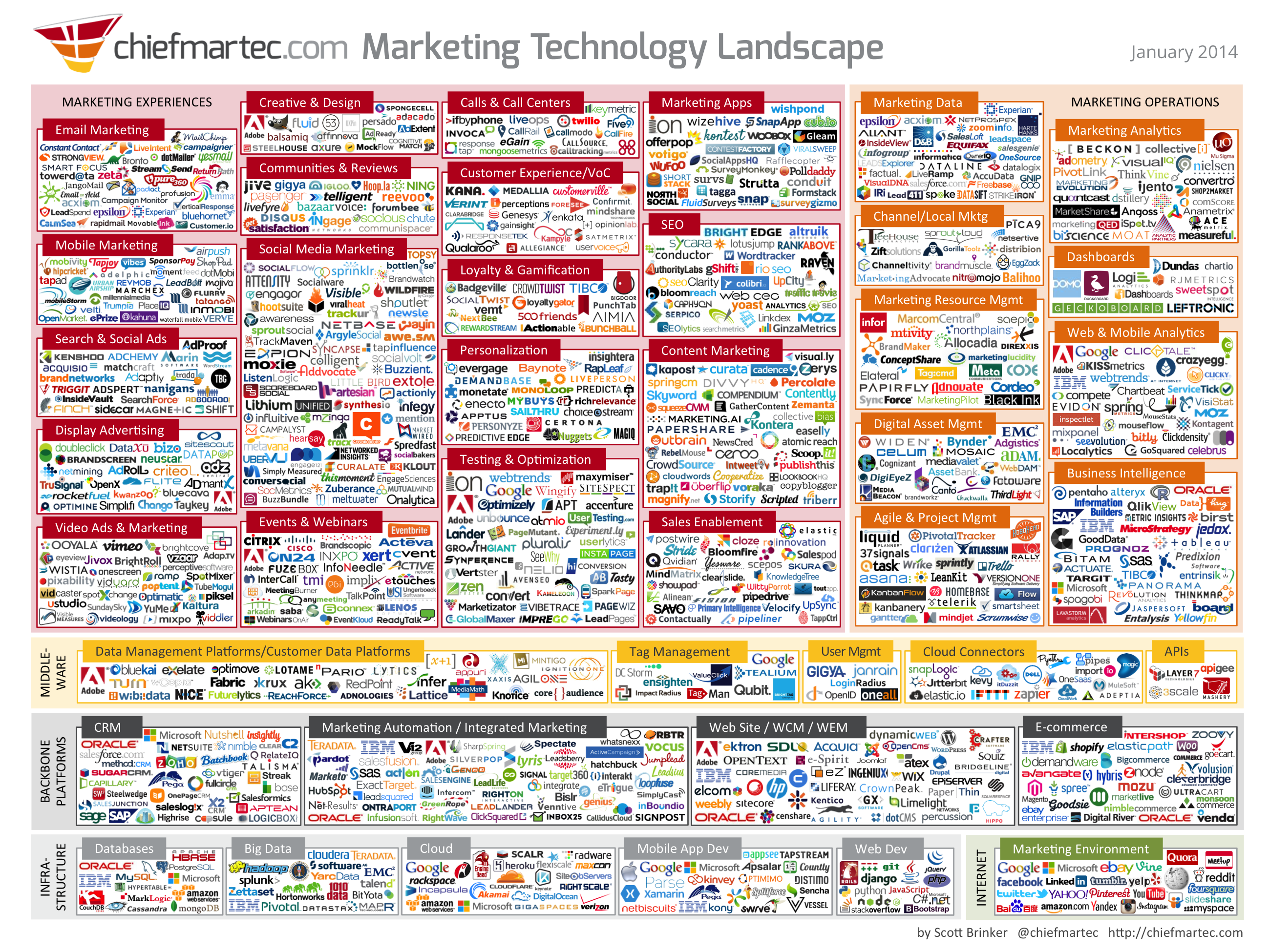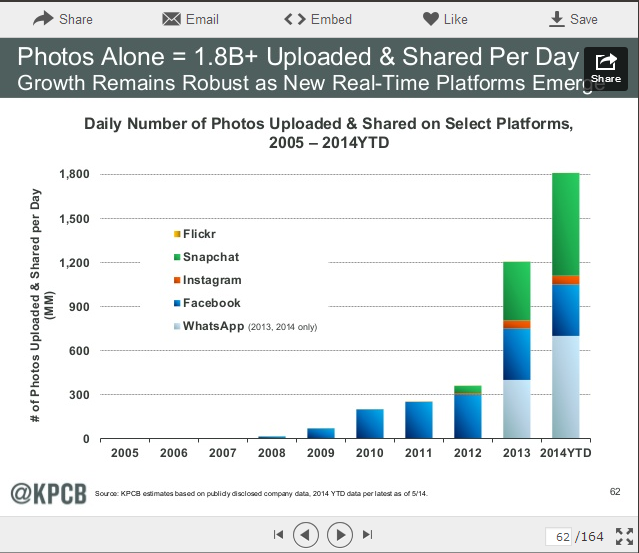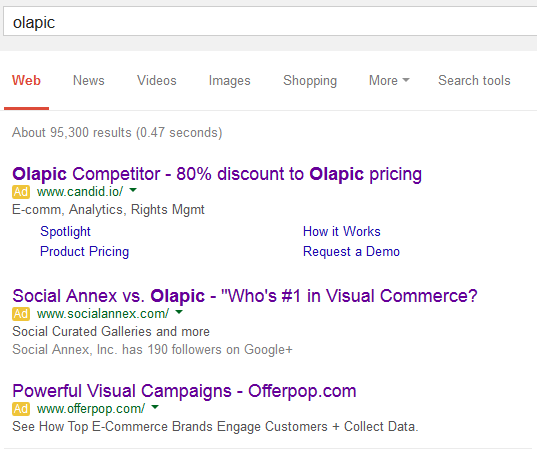If the first thing crossing your mind when you read the above question is, “What in the world is a visual web strategy…or the visual web for that matter?!” than this post is for you.
I’ll keep it brief, but here is what you need to know.
Last year, there were 1,200,000,000 photos shared daily online. This year, that number moved up to 1,800,000,000.
(That’s 1.8 Billion pics every single day.) There are another several hundred million videos created and shared daily as well. These numbers are expected to double in the next year.
Most of this sharing is taking place via What’sApp and Snapchat, and much of it is mobile traffic.
In fact, there are pic sharing networks that you probably never heard of despite them having over 25,000,000 users. For example, We Heart It, a social network for sharing pictures that move you and others. (They don’t allow any negativity. No comments…the only action you can take is to heart a picture or ignore it, this keeps creativity pure and flowing.)
Personally, I suspect that the visual web will start fragmenting into niche sharing apps…
This trend is not a fad and is too widespread to just ignore. This is what perplexes me. Despite these staggering numbers, I doubt more than a few thousand companies in the world have adopted an active visual web strategy. While there might be many more companies that have adopted strategies like photo and video contests on Instagram and Facebook, many of them are not even thinking about ways to find customers on Snapchat or WhatsApp.
According to this Chief Martec marketing technology landscape

there are over 947 companies in the marketing and technology space. I have only heard about a handful that are focused on the visual web.
Think about that for a minute. 1.8 Billion conversations are happening daily through visual media, and a fraction of a percentage of cutting edge, emerging marketing technology companies have decided to focus on that ridiculously important and powerful shift in communication.
It Doesn’t Take Rocket Science To Appreciate The Value in Visual Content.
We all know a picture is worth 1000 words. At 1.8 billion pictures a day, that is a lot of words!
Here is the Bottom Line – Your customers are having conversations about you with selfies, pics and videos and it’s time to start leveraging that user generated content to grow and expand your bottom line.
Here are a few companies worth exploring to get started.
1. Chute – This company is basically a rights management platform for user generated photos…with a layer of engagement tools. The basic idea is that it searches for hashtags and brand mentions, and lets you request usage of those pictures from the owners. They claim a massive acceptance rate as these requests from brands are quite flattering for the pic-takers.
One of the cool features Chute has (although some others have it too) is the ability to add user generated photos on your product pages on ecommerce sites. It will be interesting to see how this evolves into a more powerful social proof signal.
2. Ditto Labs – These folks are able to recognize when your logo appears in peoples pictures, even if the image is untagged. They just inked a killer deal with Tumblr to get the full firehose of their images. Here is what that looks like.
3. Curalate – These folks claim they are unique in that index every pixel of photos and scan hundreds of millions of photos a day for matches. Think of this like a complex image search engine that can find your products in the real world in untagged images. For example, if you are a fashion brand, they can find pics of a customer wearing your dress without it being tagged. (I don’t know how well this works just yet, but it sounds promising.)
4. Olapic – I don’t know a ton about these folks, but they have been advertising at me through BusinessInsider newsletters I get. They appear to let you curate user generated pics and display them beautifully.
All you need to do is Google any of these brands and you will see another 3 or 4 competitors advertising…
This is actually a decent strategy because these companies are not particularly well known and there is still much work to be done in demand generation, so capturing anyone researching competitors in this space is a good idea.
Different solutions, some enterprise, some more affordable, but all revolve around this same idea.
People are increasingly communicating through visual content and the leaders of the future will be the brands that leverage that content for fun and profits.
On a personal note, I hope to run a bunch of marketing experiments around some visual web ideas I have and if you have an interest in exploring the visual web with me, please drop me a line.



 Click Images To Verify
Click Images To Verify

If the first thing crossing your mind when you read the above question is, “What in the world is a visual web strategy…or the visual web for that matter?!” … Yeah, that was me, but I do know what you’re talking about now, and I can appreciate that in this day and age, visual content really is important. Curalate is something I find really interesting, and it just proves how much the internet can both be kind of a scary place (with their pixel scans), but how valuable these programs can be. Coming up with strategies that involve sharing user generated pictures is something really important these days, I believe. People (especially the younger generations) love to have their pictures plastered all over the net and you can build up more business to individual interaction if you’re using them as part of your promotions. They’ll probably promote you in turn too; “Hey, look! My picture is being used by this company…”